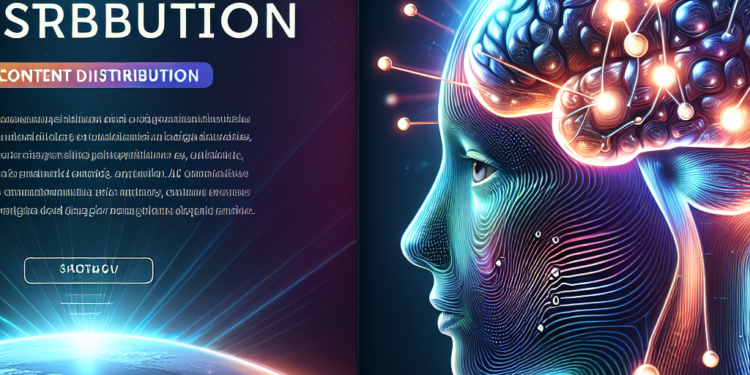In today’s digital age, content distribution plays a critical role in the success of businesses and brands. With the increasing amount of content being generated every day, it has become increasingly challenging to ensure that your content reaches the right audience at the right time. This is where Artificial Intelligence (AI) comes into play, enabling businesses to effectively distribute their content to the right audience through the use of advanced algorithms and machine learning techniques.
AI has revolutionized the way businesses approach content distribution, allowing them to create personalized and targeted content for their audience. By analyzing data and trends, AI can make predictions about what type of content will resonate with specific audiences, helping businesses create content that is more likely to engage and convert users.
There are several strategies that businesses can employ to leverage AI for effective content distribution. These strategies can help businesses maximize their reach and engagement, ultimately leading to increased brand awareness and revenue. Let’s explore some of the key AI strategies for effective content distribution.
1. Personalization
One of the key advantages of AI in content distribution is its ability to personalize content for individual users. By analyzing user data such as browsing history, social media activity, and purchase behavior, AI can create personalized content recommendations that are tailored to the interests and preferences of each user. This level of personalization can significantly increase user engagement and drive conversions, as users are more likely to engage with content that is relevant to their interests.
AI-powered personalization can also help businesses segment their audiences more effectively, allowing them to target specific demographics with tailored content. For example, an e-commerce retailer can use AI to create personalized product recommendations for each user based on their browsing history and purchase behavior, increasing the likelihood of a purchase.
2. Predictive analytics
Another key AI strategy for effective content distribution is predictive analytics. By analyzing historical data and trends, AI can make predictions about future user behavior and preferences, helping businesses create content that is more likely to resonate with their audience. Predictive analytics can help businesses identify emerging trends, target the right audience at the right time, and optimize content distribution strategies for maximum impact.
For example, an online publisher can use predictive analytics to determine the best time to publish content based on when their audience is most active online. By analyzing data such as user engagement patterns and social media trends, AI can help businesses optimize their content distribution schedule for maximum reach and engagement.
3. Content optimization
AI can also help businesses optimize their content for maximum impact. By analyzing user feedback and engagement data, AI can identify areas for improvement and suggest ways to enhance the effectiveness of content. This can include fine-tuning the tone and style of writing, optimizing headlines and meta tags for SEO, and identifying keywords and phrases that are likely to resonate with the target audience.
AI-powered content optimization can help businesses create content that is more engaging, informative, and relevant to their audience. By analyzing user behavior and feedback, AI can help businesses understand what type of content is most effective in driving user engagement and conversions, allowing them to create more impactful content that resonates with their audience.
4. Automated content distribution
AI can also help businesses automate the content distribution process, making it easier and more efficient to reach a wider audience. By analyzing data such as user preferences, behavior, and engagement patterns, AI can help businesses identify the best channels and platforms for distributing their content, ensuring that it reaches the right audience at the right time.
Automated content distribution can help businesses streamline their content distribution process, allowing them to reach a larger audience with less effort. By leveraging AI-powered algorithms and machine learning techniques, businesses can automate tasks such as scheduling and posting content, analyzing user feedback, and monitoring engagement metrics, freeing up time and resources to focus on creating high-quality content.
5. A/B testing
Another key AI strategy for effective content distribution is A/B testing. By creating multiple versions of content and testing them against each other, businesses can determine which version is most effective in driving user engagement and conversions. AI can help businesses analyze the results of A/B tests and identify patterns and trends that can be used to optimize future content distribution strategies.
A/B testing can help businesses identify the most effective content formats, headlines, and calls to action for their audience. By testing different versions of content and analyzing user engagement metrics, businesses can determine which elements are most likely to resonate with their audience and drive conversions, ultimately leading to increased brand awareness and revenue.
In conclusion, AI offers businesses a powerful set of tools and techniques for effective content distribution. By leveraging AI-powered algorithms and machine learning techniques, businesses can create personalized and targeted content that resonates with their audience, optimize their content distribution strategies for maximum impact, and automate tasks such as scheduling and posting content. With the right AI strategies in place, businesses can maximize their reach and engagement, ultimately leading to increased brand awareness and revenue.













